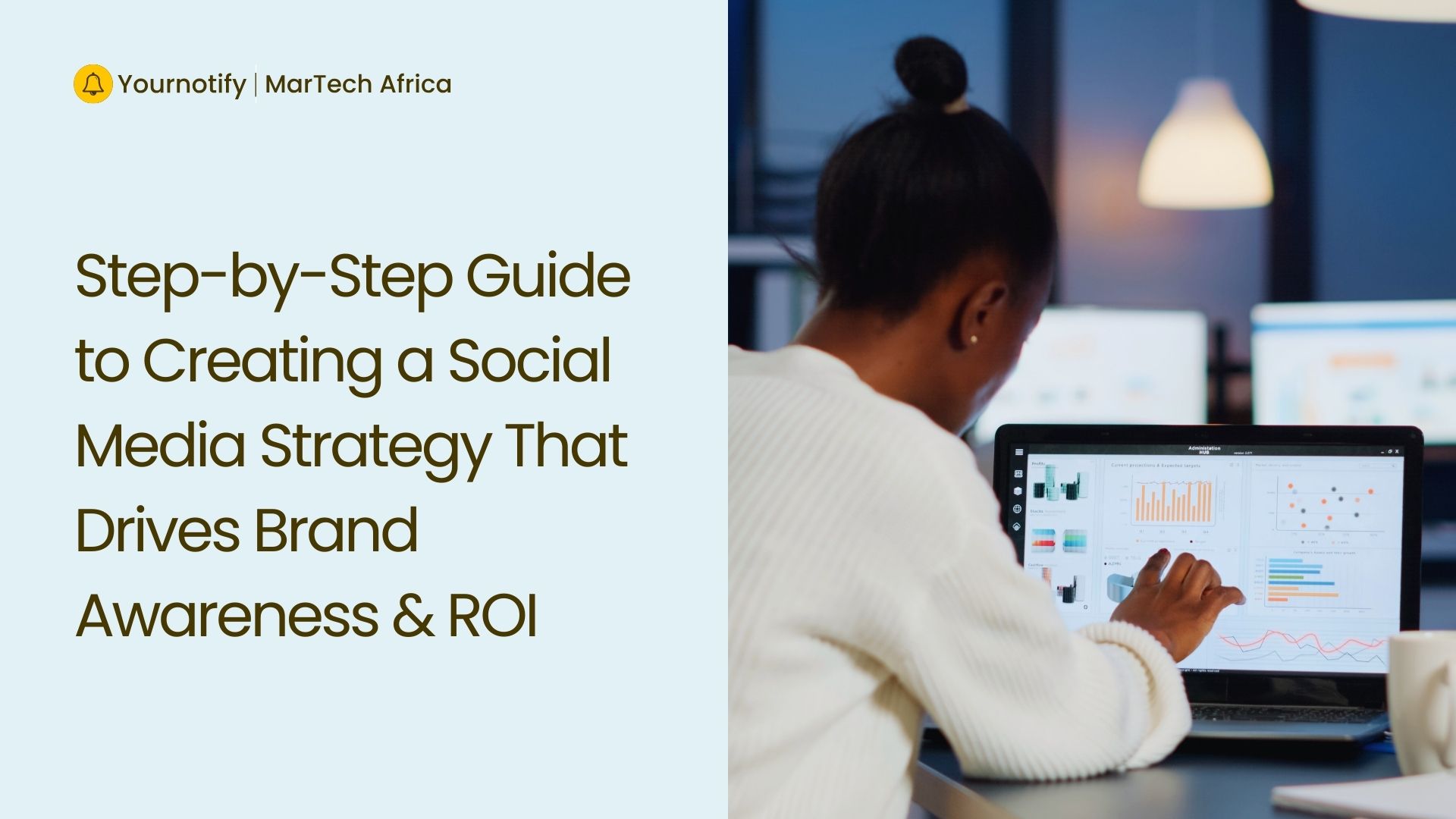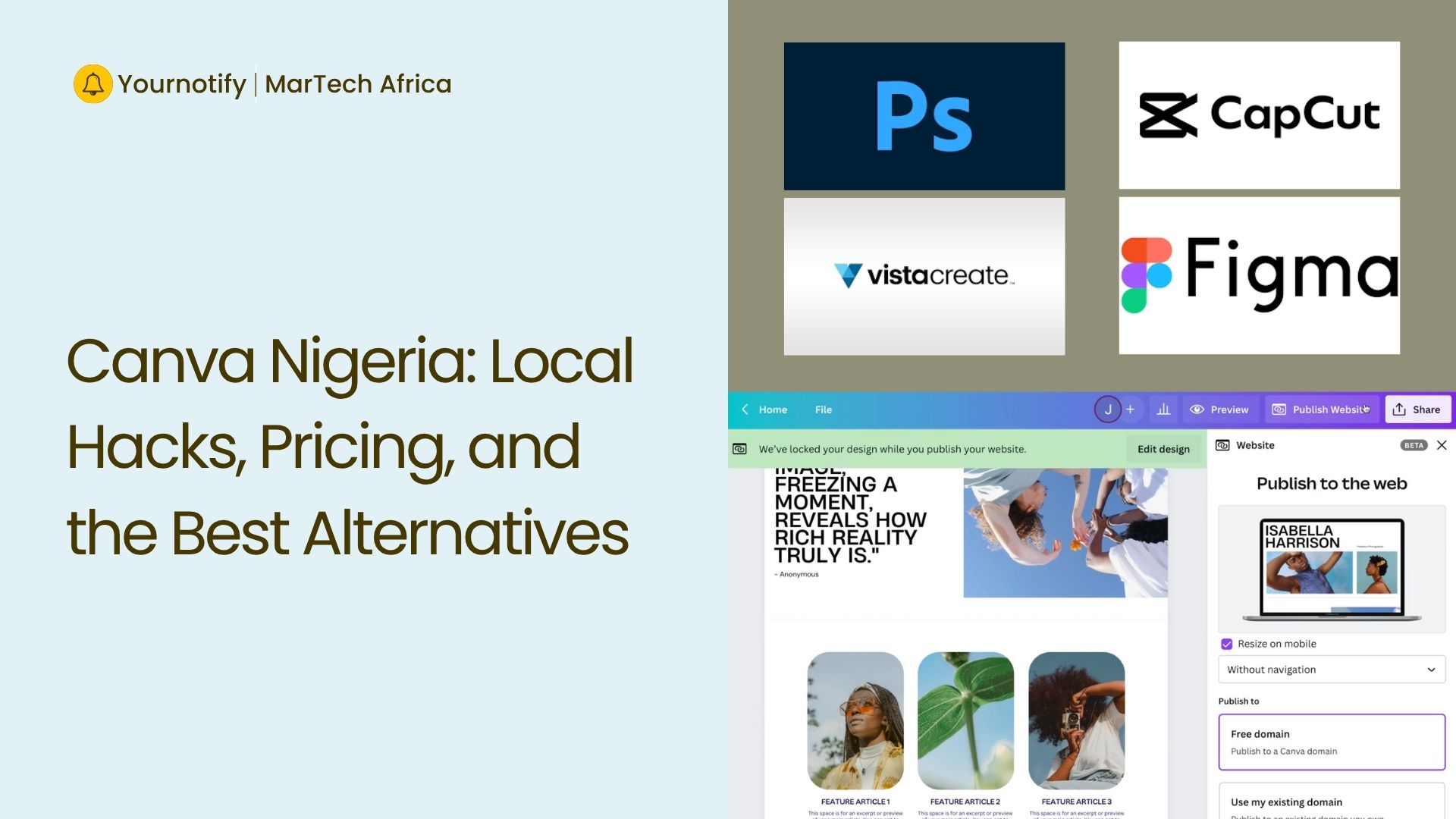If you’re building or marketing a brand in Africa today, social media has become the…

A Step-by-Step Social Media Strategy to Drive Brand Awareness and ROI
Social media has become an essential channel for brands and businesses but not every social media effort leads to real results. Many companies post consistently and gain some likes and followers, yet struggle to turn that attention into actual business outcomes like leads, sales, or meaningful engagement. This is where a conversion-focused social media strategy comes in. The need for this kind of strategic approach is even more evident when you look at the numbers. According to Datareportal’s Global Social Media Statistics:
- There are over 5 billion active social media users—that’s nearly 64% of the world’s population
- The average time spent every day on social media is 2 hours and 21 minutes
- YouTube has the greatest number of active users, followed by WhatsApp, Facebook and Instagram
- People use an average number of 6.8 platforms each month
A well-thought-out social media strategy doesn’t just aim to “show up” online, it’s about creating content and systems that guide users toward taking action. It could be signing up for your newsletter, downloading a free resource, making a purchase, or simply entering your sales funnel.
Here is a step-by-step breakdown of how to create a social media strategy that not only boosts visibility but actually delivers measurable results.
Step 1: Define Clear Goals
The foundation of any strong social media strategy is having well-defined goals. Your goals should be tied directly to business outcomes. When your goals are specific, it becomes much easier to build content and campaigns that support them.
This is where the SMART framework comes in handy. Your goals should be:
- Specific: What exactly do you want to achieve?
- Measurable: How will you track your progress?
- Achievable: Is it realistic based on your current position?
- Relevant: Does it align with your overall business or marketing objectives?
- Time-bound: When do you want to hit this target?
For example, a strong goal might be: “Increase sign-ups for our free masterclass by 25% using targeted Instagram ads within 60 days.”
Step 2: Understand Your Audience
Audience research is the next important step you need to take. This will help you speak directly to the needs, pains, and desires of your audience. You will need to consider the following when carrying out an audience research:
- Who your audience is (demographics such as age, gender, job role, income level)
- What matters to them (psychographics like goals, challenges, values, and motivators)
- Where they spend their time (which social platforms they actively use)
- How they prefer to consume content (short videos, carousels, blogs, memes?)
This information can be gathered through tools like Meta Audience Insights, Google Analytics, social media polls, LinkedIn analytics, and even direct conversations with your audience.
Read more related articles: Best Content Marketing Strategy for SaaS Companies in 2025
Step 3: Follow the 50/30/20 Rule for Content Balance
A high-converting social media strategy isn’t just about pushing products. It’s about offering real value while subtly guiding people toward action. One of the best frameworks for striking this balance is the 50/30/20 content rule:
- 50% Value-based content
This includes educational, entertaining, or inspirational posts that provide value without asking for anything in return. Examples include how-tos, tips, stories, or insights.
- 30% Engagement content
This encourages followers to interact with your brand and builds community. Think polls, questions, user-generated content, or challenges that drive comments and shares.
- 20% Promotional content
These are your direct sales pitches such as product announcements, flash sales, event invites, or lead magnets. Still important, but used sparingly to avoid overwhelming your audience.
This rule ensures your social media feed stays valuable and trustworthy, while still supporting your business goals.
Step 4: Create Action-Driven Content
It’s not enough to post consistently; your content should also inspire your audience to take action. Actions like clicking a link, saving a post, or making a purchase, every piece of content should guide your audience.
- Focus on benefits, not just features.
- Include clear calls-to-action (CTAs) like “Download Now,” “DM us,” “Tap the link,” or “Comment YES.”
- Highlight social proof such as customer testimonials, reviews, or case studies.
Step 5: Use Marketing Technology Tools to Streamline and Optimize
Managing an effective strategy manually can be overwhelming. That’s where marketing technology tools come in. Here are some tools to help manage your strategy and execute it efficiently:
- Planning & Scheduling: Buffer, Later, Hootsuite, Metricool
- Design: Canva, Adobe Express
- Analytics & Insights: Google Analytics, Sprout Social, Meta Insights
- Link Tracking: Bit.ly, UTM codes
- A/B Testing: Facebook Ads Manager, Unbounce, or simply test different creatives organically
Automating your social media will help free up your time to focus on strategy while ensuring consistency.
Step 6: Measure What Matters
There are several social media metrics but to know whether your strategy is working, you need to track the right metrics. Specifically the ones aligned with your goals. For businesses that are Conversion-focused, metrics might include:
- Website traffic from social platforms
- Click-through rates (CTR)
- Lead magnet downloads
- Cost-per-click (CPC) or cost-per-lead (CPL)
- Actual conversions (purchases, bookings, sign-ups)
Avoid being overly focused on metrics such as likes and follower counts. While they are helpful for reach, they don’t always translate into business growth.
Step 7: Test, Analyze, Improve
Finally, no strategy is complete without iteration. The best social media marketers constantly test and refine. Use what works, discard what doesn’t, and optimize based on real data not assumptions.
Conclusion
A social media strategy that converts is intentional, data-driven, and audience-first. It doesn’t rely on guesswork or trends alone, it aligns content, community, and campaigns with clear business goals.


